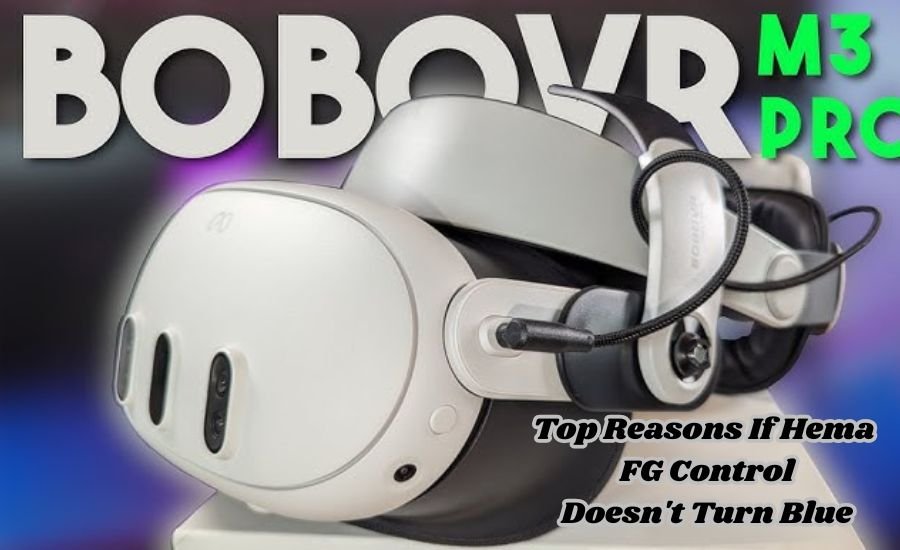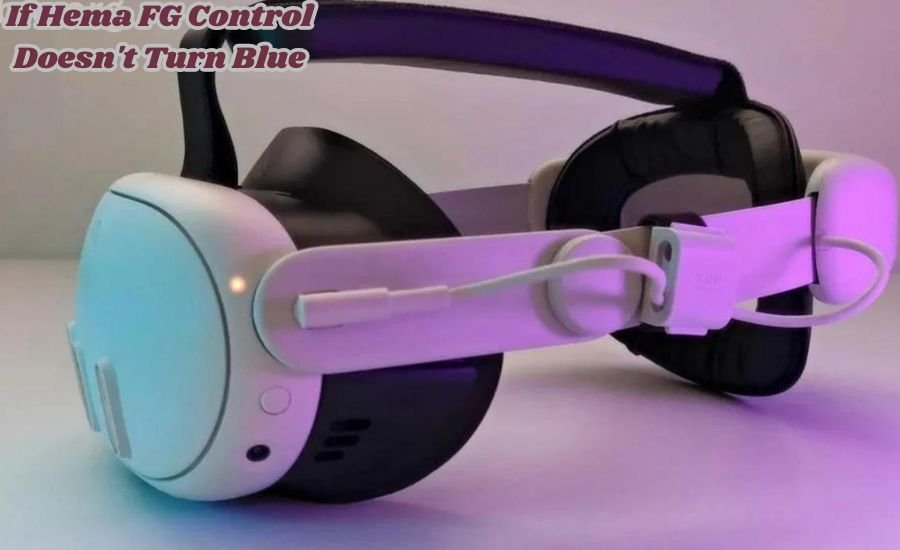If Hema FG Control doesn’t turn blue, it can be worrying, especially when you’re following an important procedure. The blue color is a clear sign that the test is working properly, and when it doesn’t appear, it means something might be wrong. But don’t worry! There are simple ways to fix this issue and get your test back on track.
When the Hema FG Control doesn’t turn blue, it could be because of problems like old reagents, equipment errors, or even a small mistake in mixing the chemicals. In this post, we will look at easy steps to troubleshoot the issue and help you get accurate test results quickly and easily.
What to Do If Hema FG Control Doesn’t Turn Blue: A Step-by-Step Guide
When Hema FG control doesn’t turn blue, it can cause confusion. This can happen for various reasons, but the good news is that there are simple steps you can follow to troubleshoot. First, check if the reagents you are using are still within their expiration date.
Next, ensure the reagents are mixed correctly. Improper mixing can lead to inaccurate results. Try mixing the chemicals again, following the instructions closely. If the issue persists, check your equipment for any malfunctions.
Finally, look at the temperature conditions in the lab. Sometimes, the environment can affect the test results. By following these steps, you can usually resolve the issue and get your test working again.
Why Is the Blue Color Important in Hema FG Control Tests?
The blue color in Hema FG control tests is crucial because it signals that the test is working properly. When the blue doesn’t appear, it means the process is incomplete or incorrect. This color change indicates that fetal blood cells have been detected in the sample.
Without the blue color, the test may give false negatives. It’s a visual confirmation that everything is in order. If the test doesn’t turn blue, it’s important to stop and review the steps you’ve taken.
This simple color change can be the difference between accurate and inaccurate results. That’s why seeing blue is essential in these tests.
Top Reasons If Hema FG Control Doesn’t Turn Blue

There are a few common reasons Hema FG control doesn’t turn blue. One of the biggest causes is expired reagents. Always make sure to use fresh, non-expired chemicals for accurate results.
Another issue could be improper mixing of the reagents. Mixing the chemicals properly is crucial for the test to work. To avoid any problems, follow the instructions carefully.
Finally, equipment failure can cause the test to fail. If your lab tools are not working correctly, the test might not produce the blue color you’re looking for.
How to Check Reagents If Hema FG Control Doesn’t Turn Blue
Reagents are a key part of the Hema FG control test. If your Hema FG control doesn’t turn blue, the first thing to check is the reagents. Always ensure that they are not expired. Expired reagents lose their effectiveness and can cause the test to fail.
It’s also important to store the reagents properly. Make sure they are kept at the right temperature and in a sealed container to avoid contamination. If reagents are not handled correctly, they can degrade.
By checking the expiration date and storage conditions of your reagents, you can often fix the issue of the test not turning blue.
Equipment Troubleshooting When Hema FG Control Doesn’t Turn Blue
Sometimes, if Hema FG control doesn’t turn blue, it could be due to faulty equipment. Equipment like centrifuges or spectrophotometers must be in good condition for accurate results. If these tools aren’t calibrated correctly, the test may not work.
To troubleshoot, check if your equipment is working properly. Look for signs of wear and tear or any malfunctions. It is possible to prevent issues before they arise with regular maintenance.
Replacing or fixing broken equipment can make a big difference in ensuring that the test produces accurate, reliable results.
The Role of Proper Mixing If Hema FG Control Doesn’t Turn Blue
Mixing the reagents properly is key when using the Hema FG control test. If Hema FG control doesn’t turn blue, it’s often because the chemicals were not mixed thoroughly. Each reagent needs to be measured and combined correctly.
Without proper mixing, the chemical reaction won’t happen, and you won’t see the blue color. Make sure to follow the instructions for mixing exactly as they are written.
Ensuring that all components are mixed well can help resolve the issue of the blue color not appearing in your test.
How Expired Reagents Affect the Test When Hema FG Control Doesn’t Turn Blue

Using expired reagents can cause issues during the Hema FG control test. If Hema FG control doesn’t turn blue, expired chemicals are often to blame. Reagents lose their effectiveness over time, which can lead to failed tests.
Always check the expiration date on your reagents before using them. Even if they seem fine, outdated chemicals won’t give you the correct results.
To avoid this, make sure you’re using fresh reagents and storing them properly. This will help ensure that your test turns blue as expected.
Temperature Issues to Check If Hema FG Control Doesn’t Turn Blue
Temperature plays a big role in the Hema FG control test. If Hema FG control doesn’t turn blue, it could be because the room temperature isn’t right. Most tests require a specific temperature range to work properly.
If the lab is too hot or too cold, the chemical reaction might not happen. Always make sure that the environment matches the recommended temperature settings.
Maintaining the right conditions can help fix the issue of the test not turning blue and improve the accuracy of your results.
Simple Fixes for Sample Handling Problems If Hema FG Control Doesn’t Turn Blue
Proper sample handling is crucial in the Hema FG control test. If Hema FG control doesn’t turn blue, it could be because of how the sample was handled. Samples should be collected and stored carefully to avoid contamination.
When samples are mishandled, they can affect the outcome of the test. Be sure to follow the guidelines for sample collection and storage.
Handling samples with care can prevent the issue of the test not turning blue and give you more accurate results.
How to Prevent Errors If Hema FG Control Doesn’t Turn Blue in Future Tests
Preventing errors is essential for a successful Hema FG control test. If Hema FG control doesn’t turn blue, learning from past mistakes can help avoid future issues. One way to prevent problems is by double-checking your steps before starting the test.
Make sure to use fresh reagents, check your equipment, and mix everything properly. Following the correct procedure will help you avoid mistakes.
By staying organized and following the instructions carefully, you can prevent the issue of the test not turning blue in the future.
Understanding the Science Behind Why Hema FG Control Doesn’t Turn Blue

The Hema FG control test relies on a chemical reaction to turn blue. If Hema FG control doesn’t turn blue, it’s because the reaction didn’t happen. This could be due to a variety of factors, including reagent problems or equipment issues.
The blue color appears when fetal blood cells are detected in the sample. When this doesn’t happen, the test is incomplete.
Understanding the science behind the test can help you troubleshoot and figure out why the blue color isn’t showing up.
When to Consider Replacing Equipment If Hema FG Control Doesn’t Turn Blue
Sometimes, equipment failure can cause problems with the Hema FG control test. If Hema FG control doesn’t turn blue, it might be time to replace your equipment. Old or faulty machines can produce incorrect results.
Before replacing equipment, try calibrating it. If that doesn’t work, then replacement might be necessary.
Keeping your lab equipment in good shape is important for ensuring the test turns blue and delivers accurate results.
Must-Read Information: Fairlight CMI ARR1 Soundfont
How to Avoid Common Mistakes If Hema FG Control Doesn’t Turn Blue
Common mistakes can easily be avoided during the Hema FG control test. If Hema FG control doesn’t turn blue, it could be because of simple errors. One common mistake is using expired reagents, which can prevent the test from working properly.
Another error is improper mixing. Always make sure the reagents are combined according to the instructions to avoid issues.
By paying attention to detail and double-checking your steps, you can avoid these common mistakes and ensure your test turns blue.
The Importance of Following Protocols If Hema FG Control Doesn’t Turn Blue
Protocols are in place to help ensure accurate results in the Hema FG control test. If Hema FG control doesn’t turn blue, it’s possible that the protocol wasn’t followed exactly. Tests can fail as a result of this.
Make sure to follow each step carefully, from reagent preparation to sample handling. Missing a step or not following the instructions can lead to incorrect results.
By sticking to the protocol, you can avoid the issue of the test not turning blue and get the best results possible.
How to Improve Test Accuracy If Hema FG Control Doesn’t Turn Blue
Improving test accuracy is important for the Hema FG control test. If Hema FG control doesn’t turn blue, accuracy could be the problem. One way to improve accuracy is by ensuring that all reagents and equipment are working properly.
Checking for human error is another way to boost accuracy. Always review the steps and double-check your work before running the test.
By focusing on accuracy, you can resolve the issue of the test not turning blue and get more reliable results.
Conclusion
If Hema FG control doesn’t turn blue, it can be frustrating, but with the right steps, you can fix the issue quickly. Checking your reagents, equipment, and following the proper steps are all important. These simple fixes can help you get your test back on track and working as it should.
Always remember to stay organized and follow the instructions carefully. By understanding what causes the problem and how to fix it, you can avoid issues in the future. With a little patience and attention, you can ensure that your tests give the correct results every time!
What To Be Aware Of: Dr hyperion 451 Ublock
FAQs if hema fg control doesn’t turn blue
Q: What causes Hema FG control to not turn blue?
A: The most common causes include expired reagents, improper reagent mixing, equipment malfunction, or incorrect temperature settings.
Q: Can improper sample handling affect the Hema FG control test?
A: Yes, contaminated or poorly collected samples can prevent the test from showing the blue color.
Q: How do I know if my reagents are still effective?
A: Always check the expiration date and ensure reagents are stored properly according to the manufacturer’s instructions.
Q: If my equipment isn’t working properly, what should I do?
A: Try recalibrating the equipment, and if it still doesn’t work, consider servicing or replacing the faulty devices.
Q: Is it possible to fix a failed Hema FG control test?
A: Yes, by identifying the issue—such as reagent problems or equipment errors—you can fix it and retake the test.
Q: Why does temperature matter in the Hema FG control test?
A: Incorrect temperature can disrupt the chemical reaction needed for the test to work, leading to no blue color change.
Q: How often should lab equipment be maintained?
A: Regular maintenance, such as calibration and cleaning, should be done to ensure accurate test results and avoid failures.
Q: Can using outdated software cause Hema FG control issues?
A: Yes, outdated software can lead to problems with equipment performance, so keeping systems updated is crucial.
